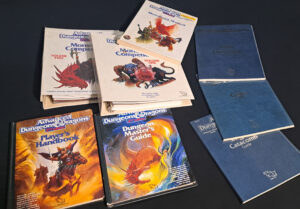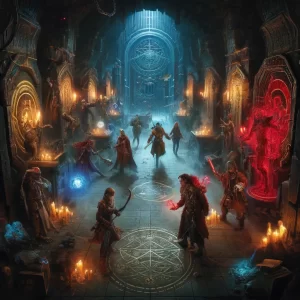
a painterly scene depicting a giant kneeling in the desert sand, under a dramatic, cloud filled sky. the giant has a rugged appearance, wearing tatter
To create a character to play in the AD&D game, proceed, in order, through Chapters 1 through 6. (Chapter 5 is optional). These chapters will tell you how to generate your character's ability scores, race, and class, decide on his alignment, pick proficiencies, and buy equipment. The necessary steps are summarized here. Don't be concerned if you encounter terms you don't understand; they are fully explained in chapters 1 through 6. Once you've worked through this list, your character is ready for adventure!
Follow these steps below or go straight to building your character now - I created for us:
AD&D 2nd Edition Character Creator
Or manually use a fillable PDF Character Sheet:
Step 1: Roll Ability Scores (chapter 1)
Your character needs scores for Strength, Dexterity, Constitution, Intelligence, Wisdom, and Charisma.
Step 2: Choose a Race (chapter 2)
See Table 7 for ability score requirements. Then adjust the character's scores according to the race chosen:

Consult tables 1-6 and record the various bonuses and penalties the character receives for having particularly high or low scores.
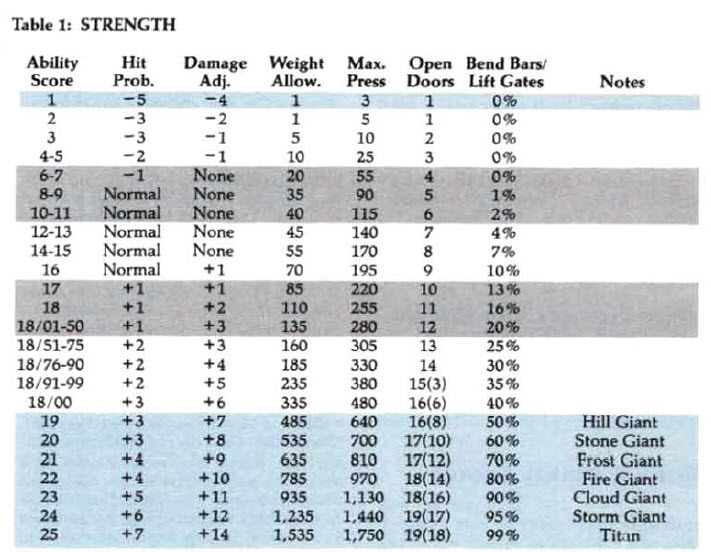
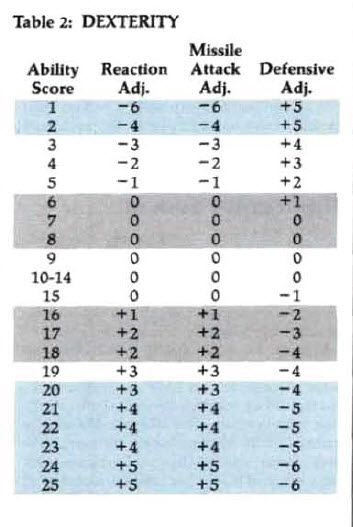
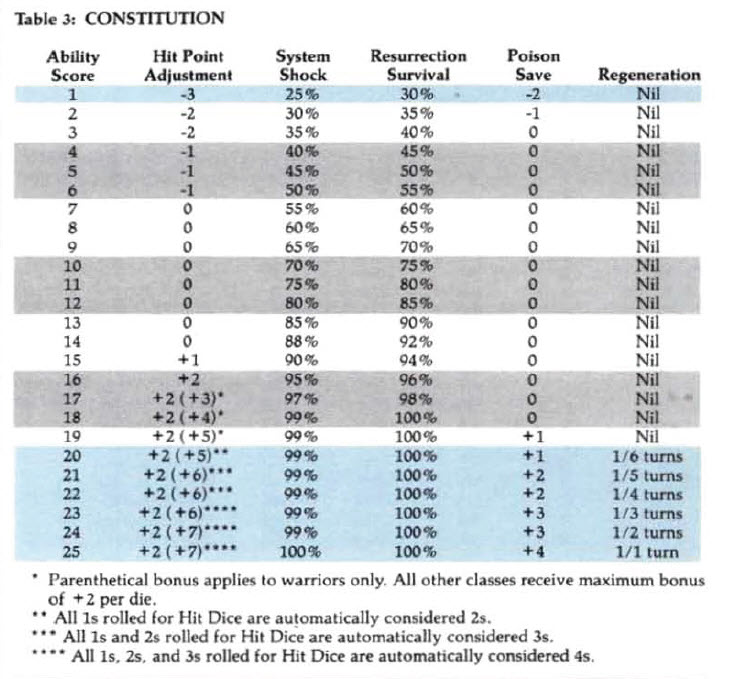
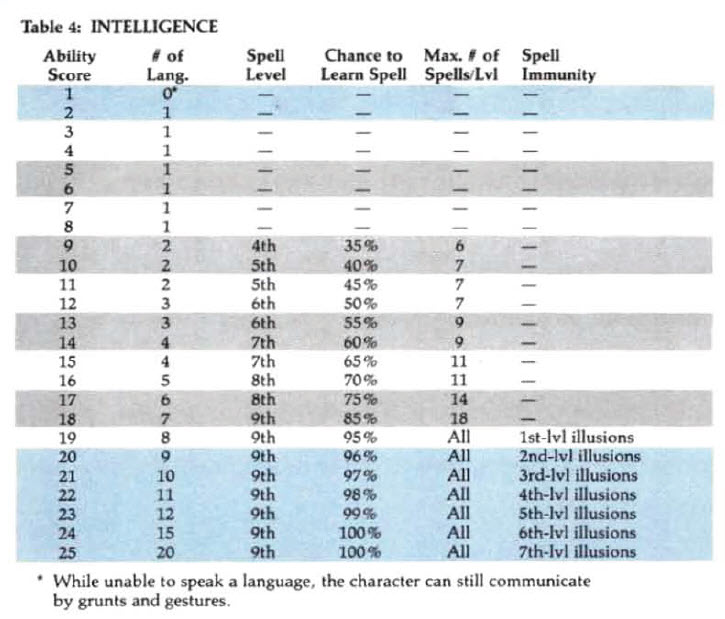
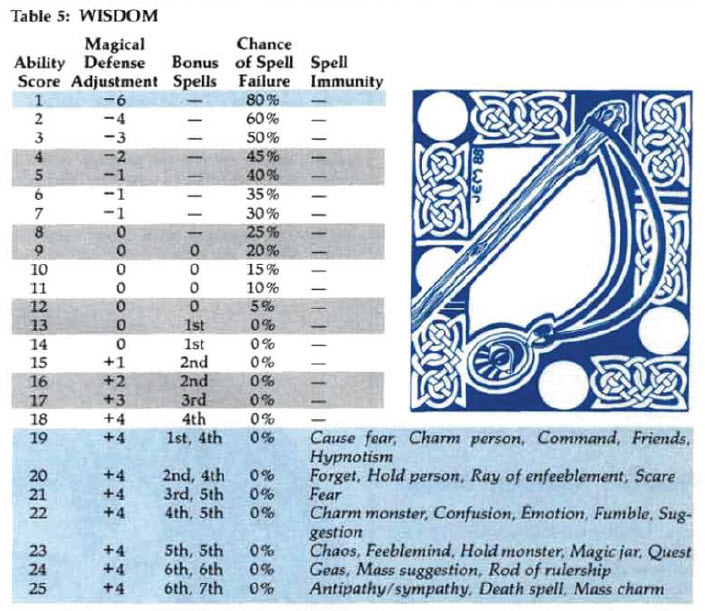
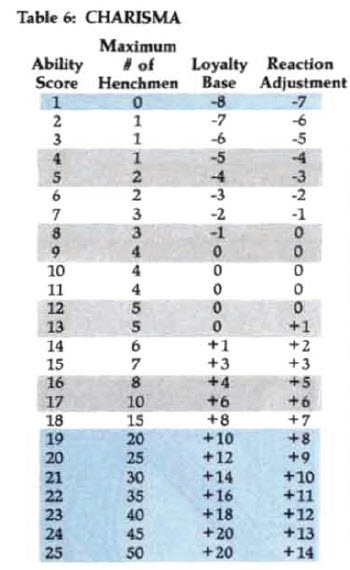
Consult the racial descriptions in chapter 2 and record the character's special racial abilities.
Finally, check Tables 10, 11, and 12 to determine the character's height, weight, starting age, and age effects.
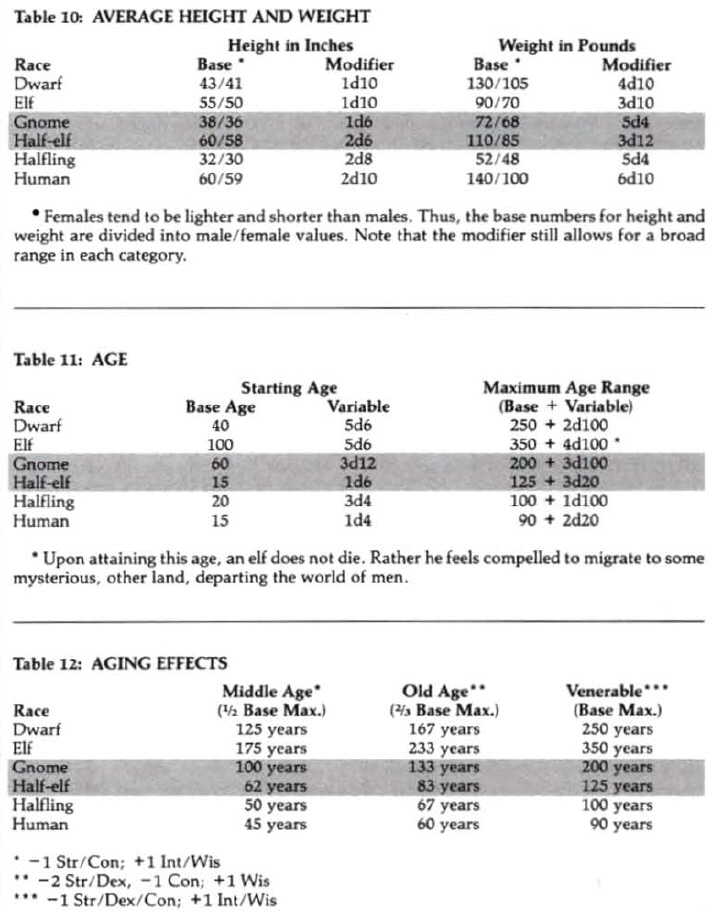
Step 3: Select a Class (chapter 3)
Select a class that is available to your character's race:
Dwarf F, C, T, F/T, F/C
Elf F, R, M, C, T, F/M, F/T, M/T, F/M/T
Gnome F, I, C, T, F/C, F/I, F/T, C/I, C/T, I/T
Half-elf F, R, M, C, D, T, B, F/C, F/T, F/D, F/M, C/R, C/M, T/M, F/M/C, F/M/T
Halfling F, C, T, F/T
Human F, P, R, M, I, C, D, T, B
Check Table 13 for class-based ability score restrictions. Read the class description and record special class abilities and restrictions.
If your character is a fighter, paladin, or ranger, is not a halfling, and has a Strength score of 18, roll d100 to determine exceptional Strength. Consult Table 1 and readjust those bonuses affected by exceptional Strength.
If your character is a mage, consult Table 4 and record his maximum spell level, chance to learn spells, and maximum number of spells per level. Ask your DM what spells the character knows.
If your character is a cleric, consult Table 5 and record bonus spells and his chance of spell failure. Note the spell spheres to which the PC has access.
If your character is a thief, record his base thieving skills scores from Table 26. Modify these scores according to Tables 27 and 28. Then apportion 60 points between those abilities, assigning no more than 30 points to any one score.
If your character is a bard, not his thief abilities from Table 33. Modify these percentages according to Tables 27 and 28. Then apportion 20 points between these abilities.
Step 4: Choose an Alignment (chapter 4)
In selecting your alignment, abide by class restrictions:
Paladin lawful good
Ranger lawful, neutral, or chaotic good
Mythos Priest any acceptable to deity
Bard any neutral combination
All others any
Step 5: Record Saving Throws and THAC0 (chapter 9)
Consult Table 60 to determine the base saving throws for your character. Consult Table 53 to determine your character's THAC0.
Step 6: Roll Hit Points (chapter 3)
Roll the appropriate hit die for your character. If the character is multi-classed, roll all applicable hit dice and average the results.
Warrior 1d10
Priest 1d8
Rogue 1d6
Mage 1d4
Step 7: Record Base Movement (chapter 14)
Find the character' base movement rate on Table 64 and record it. If the optional encumbrance rules are in effect, also record the encumbrance categories from Table 47 and modified movement rates and combat abilities.
Step 8: Select Proficiencies (optional, chapter 5)
Consult Table 34 to determine the character's weapon and nonweapon proficiency slots. Add the character's number of languages known (from Table 4) to his number of nonweapon proficiencies.
Select weapon proficiencies. If the character is a fighter, you may select a weapon specialization.
Select nonweapon proficiencies. Record their relevant abilities and check modifiers.
Step 9: Equip Your Character (chapter 6)
Consult Table 43 to determine your character's starting funds. Using Table 44, select and pay for your character's starting equipment.
Consult Table 46 to determine your character's armor class rating. Modify this base AC by his defensive adjustment.
Record the weight, size, damage, rate of fire, and range information for each weapon carried. Include type and speed factors if those optional rules are in play.


